-

Great grand tourers
© MiniGT: two letters that mean so much in the car industry. The badge is primarily used to designate a grand tourer, but has been put to good use on mildly warm hatches or for when a GTi badge would promise something a car might not be able to deliver.
The Mini 1275 GT was a real-world GT, but it’s not the only one. So, we trawled the archives in search of other famous GT cars. Note, this is a not an exhaustive list and we’ve steered clear of badge extensions, meaning you won’t find a GT-R, GTi, GTS or GTE here.
-
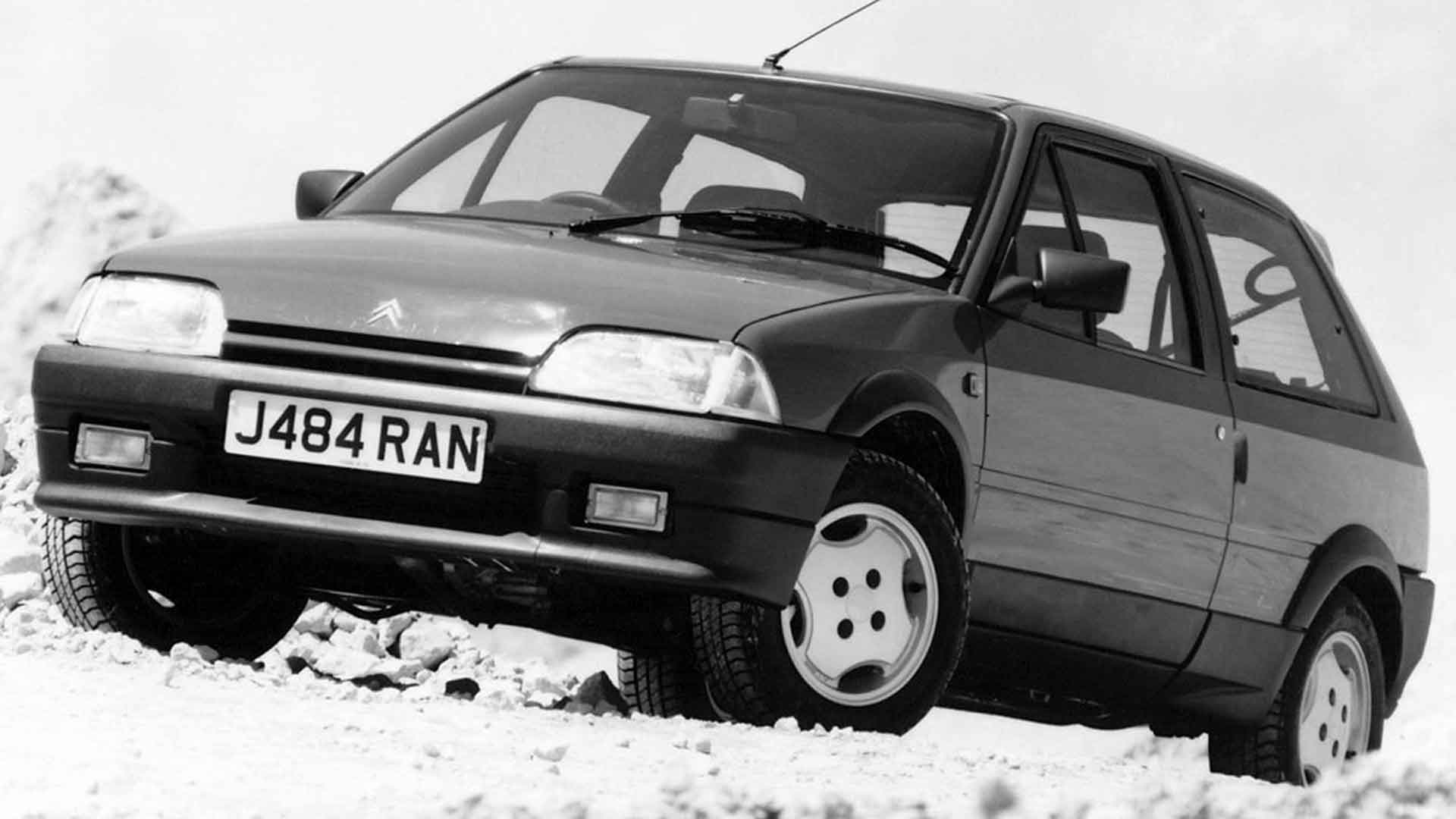
Citroen AX GT
© CitroenThe Citroen AX GT is unlikely to win a game of Top Trumps, unless the chosen category is ‘lightness’ or ‘risk of death in the event of an accident’. But that doesn’t mean it’s not fit to wear the GT badge, because the featherlight Citroen was one of the most exciting cars of the late 80s and early 90s.
Power was sourced from a 1.4-litre engine developing just 86hp, but it was mated to a body that tipped the scales at a mere 722kg. It meant that the AX GT could punch well beyond its weight, especially on a twisty B-road, where it could hold its own against more illustrious competition.
-
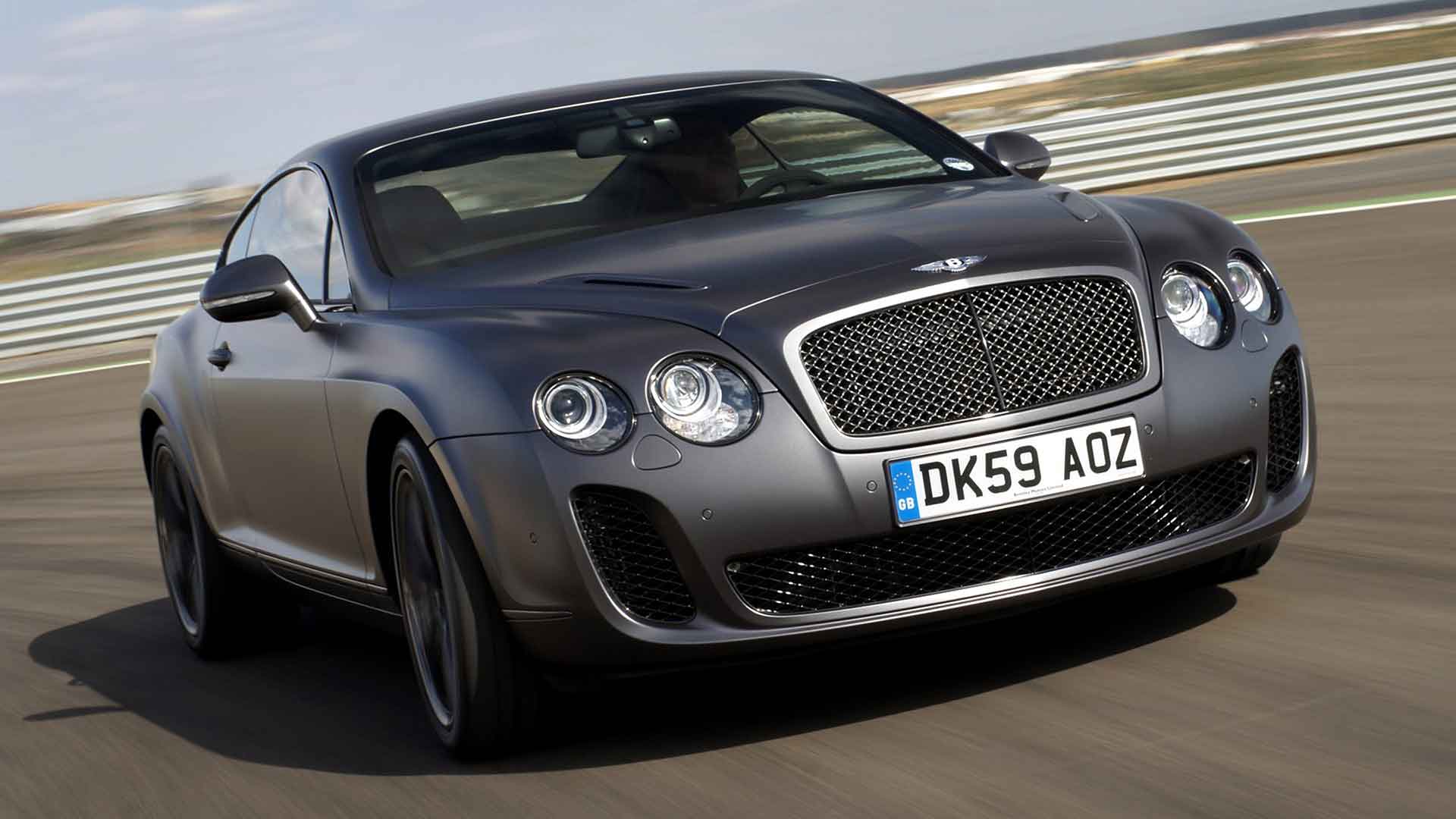
Bentley Continental GT
© BentleyIt’s not often that you’ll find a Citroen AX appearing alongside a Bentley Continental, but as they share the ‘GT’ badge, we’ll crack on with the most unlikely pairing since Danny DeVito and Arnold Schwarzenegger.
The Continental GT was the first Bentley to be built following the Volkswagen takeover in 1998 and it shares its platform with the Phaeton. After an eight-year production run, it was replaced by the second generation model in 2011 and has become a favourite of Premier League footballists.
-
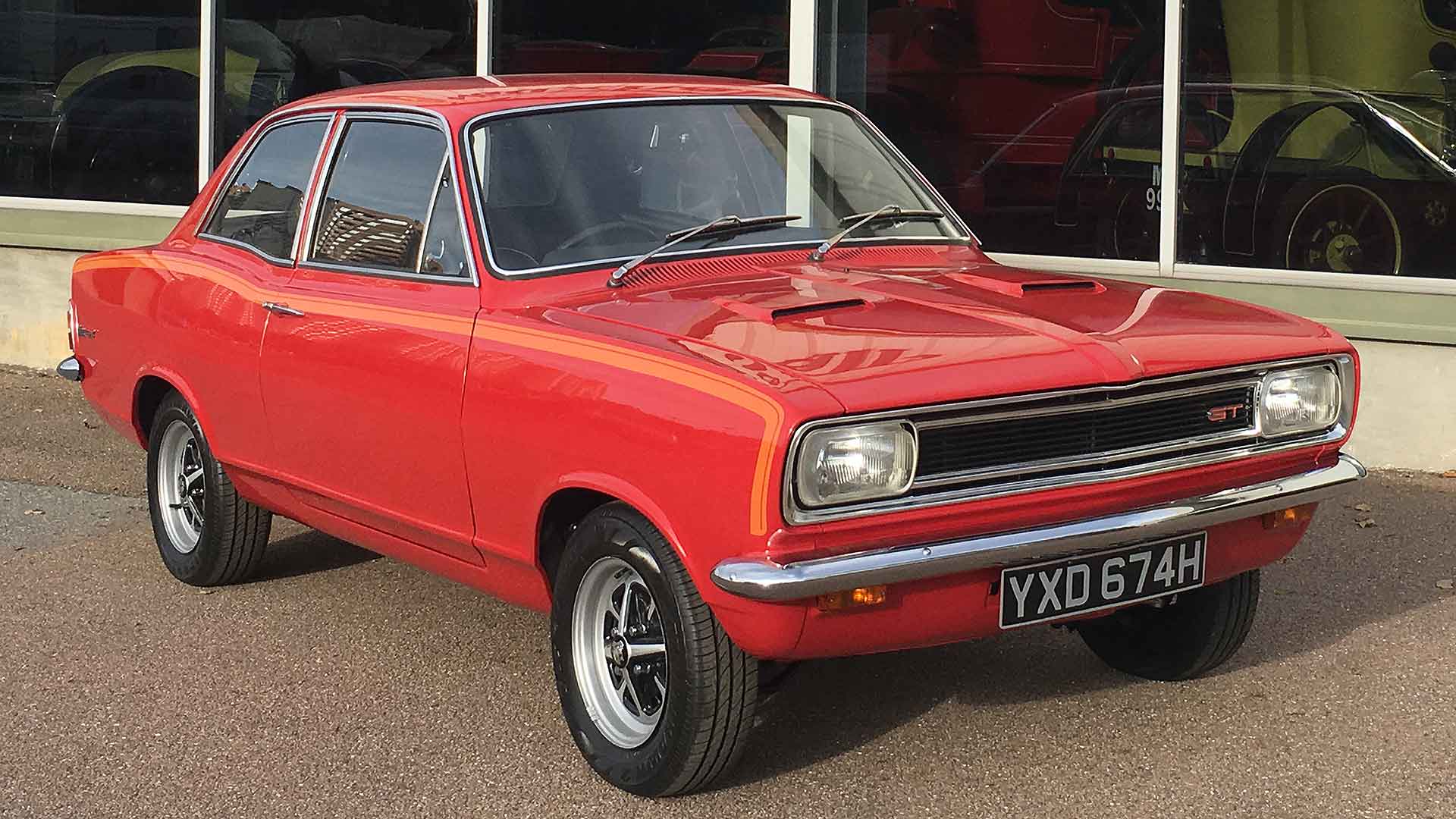
Vauxhall Viva GT
© VauxhallBack in the day, the recipe for a performance car was simple: just add a larger engine. The Vauxhall Viva may have been an unlikely starting point for a go-faster saloon, but a twin-carb 2.0-litre engine gave it a fighting chance of keeping up with a Lotus Cortina.
An optional matte black bonnet and a pair of bonnet scoops delivered instant high street appeal, while a 100mph top speed lifted the GT beyond the realms of the 1.2- and 1.6-litre Vivas driven by your dad.
-
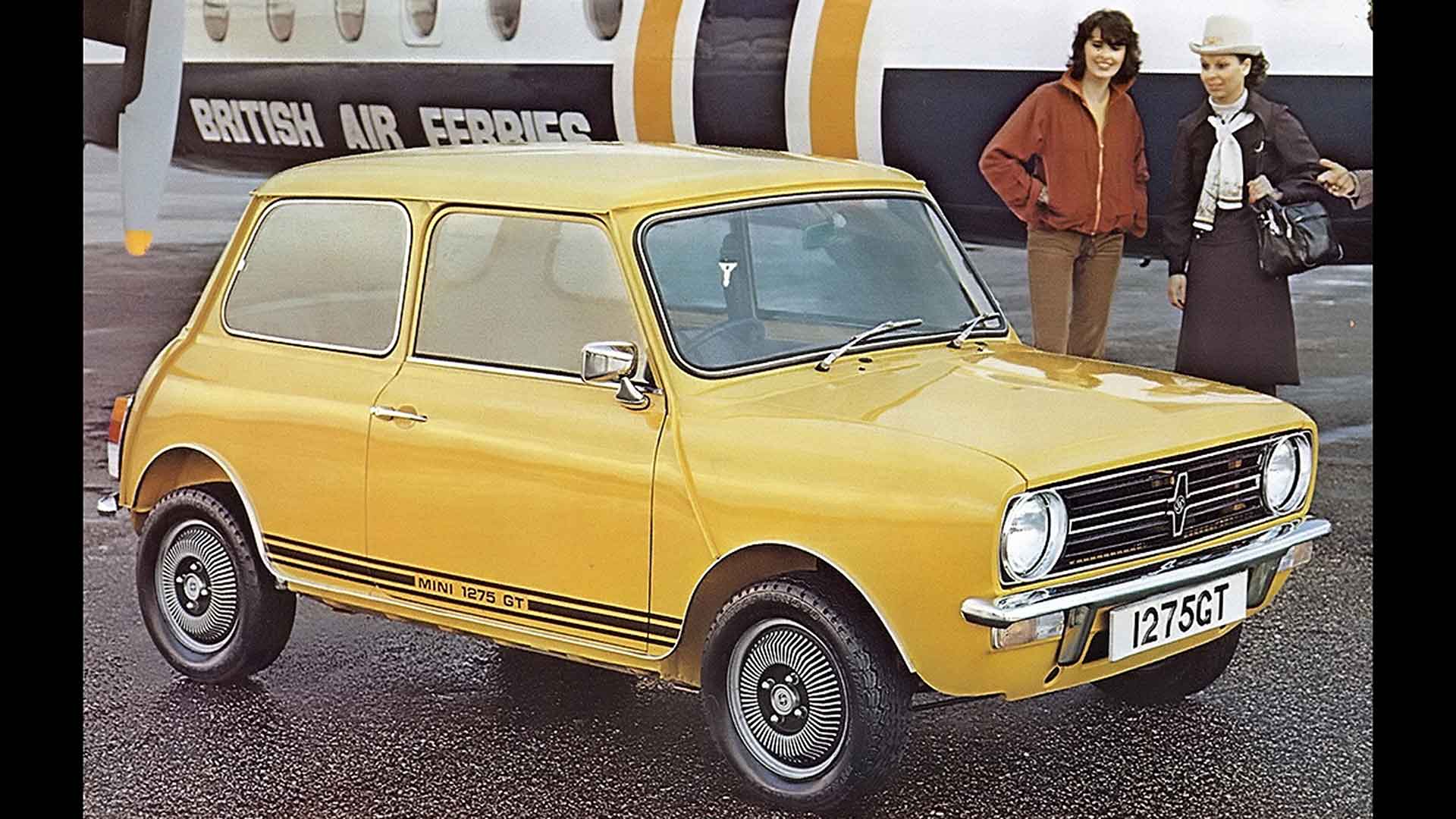
Mini 1275GT
© BMCThe 1275GT was the Mini Cooper for the 1970s but it lacked the character and flair of its more illustrious predecessor. Introduced in 1969, the 1275GT was designed to be cheaper and easier to build – the result of cost-cutting at British Leyland.
The 1275cc single-carb engine produced just 54hp and delivered a top speed of 85mph. “Side-stripes cannot be removed, but in other respects the car is just a Mini Clubman with a bigger engine,” was Autocar’s damning verdict in 1974.
-
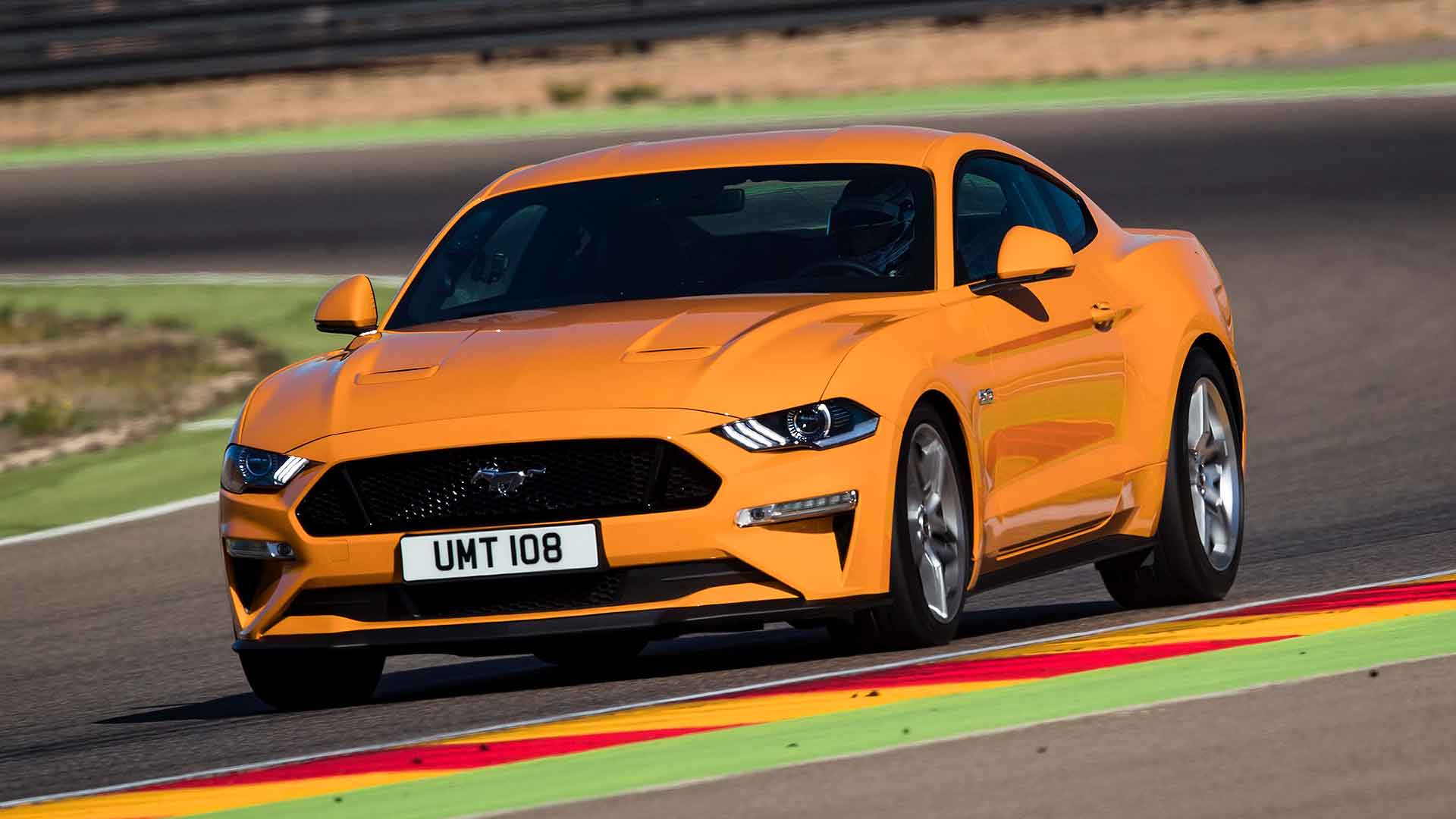
Ford Mustang GT
© FordFord has a rich history of GT vehicles, dating back to 1964 and the ‘Grand Touring 40 inches’, more commonly known as the GT40. It was only natural that the flagship Mustang would be known as the Mustang GT.
Today is no different, with the GT badge serving to distinguish the 5.0-litre V8 from the less well-endowed 2.3-litre EcoBoost.
-
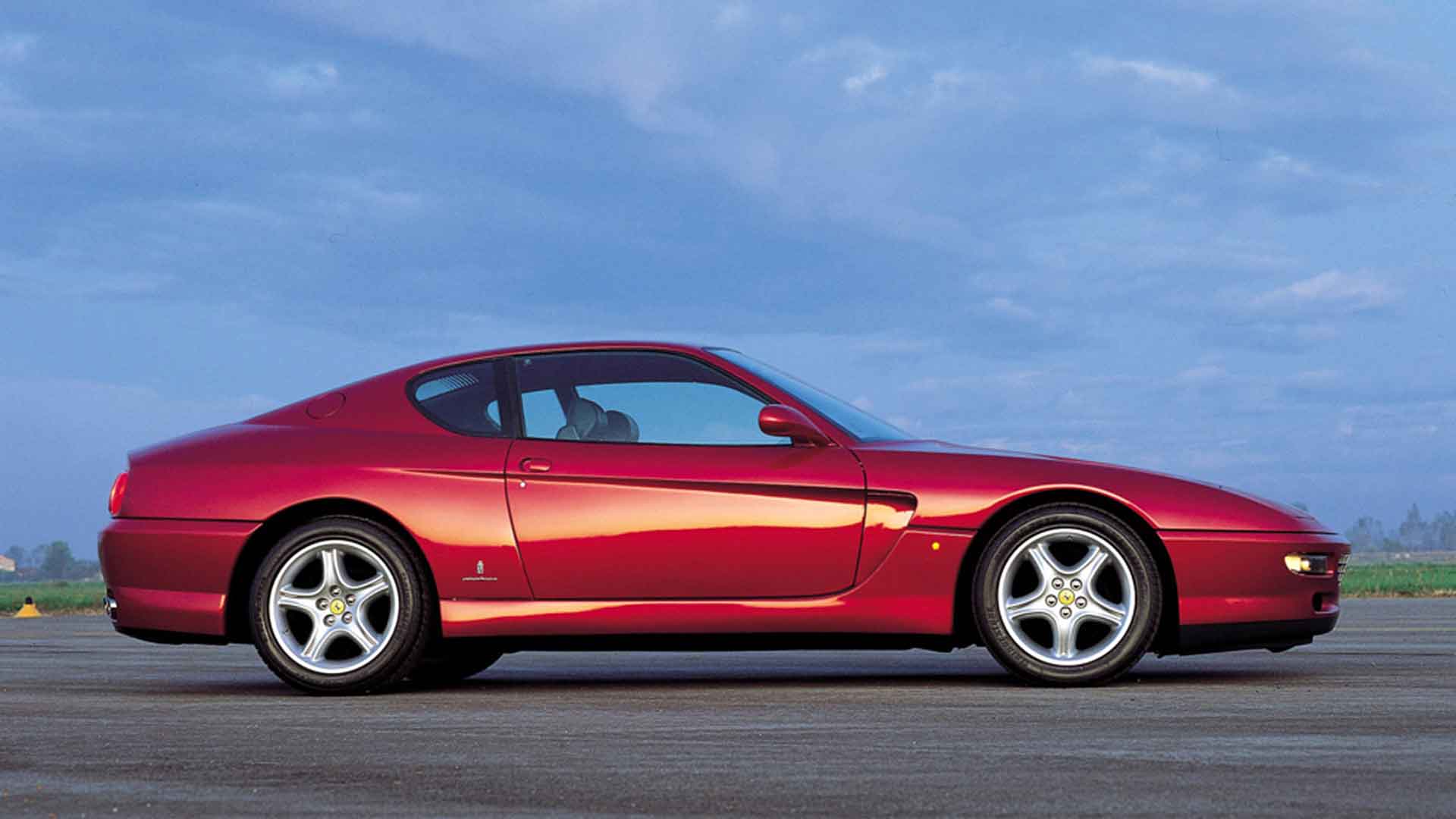
Ferrari 456 GT
© FerrariThe GT badge is part of the furniture at Maranello, albeit more commonly with the addition of an extra letter. The 250 GTO, F355 GTS and 348 GTB are just three examples.
The 456 GT saw Ferrari return to the front-engine layout for the first time since the 365 GTB4 of 1968 and was, perhaps, one of the greatest grand tourers of the 1990s. A 2+2 coupe with the beating heart of a 5.4-litre 12-cylinder engine isn’t a bad form of transport for crossing a continent or two.
-

Jensen GT
© WikimediaThe Jensen GT was a last-ditch effort to save the ailing Jensen Motors, but the shooting brake – think Volvo 1800ES and Scimitar GTE – failed to save the company. A case of too little, too late.
The GT was born out of the Jensen-Healey convertible and powered by a Lotus twin-cam engine. It should have sold well, but the world was waiting for 1982 and the arrival of the Lynx Eventer. Probably.
-
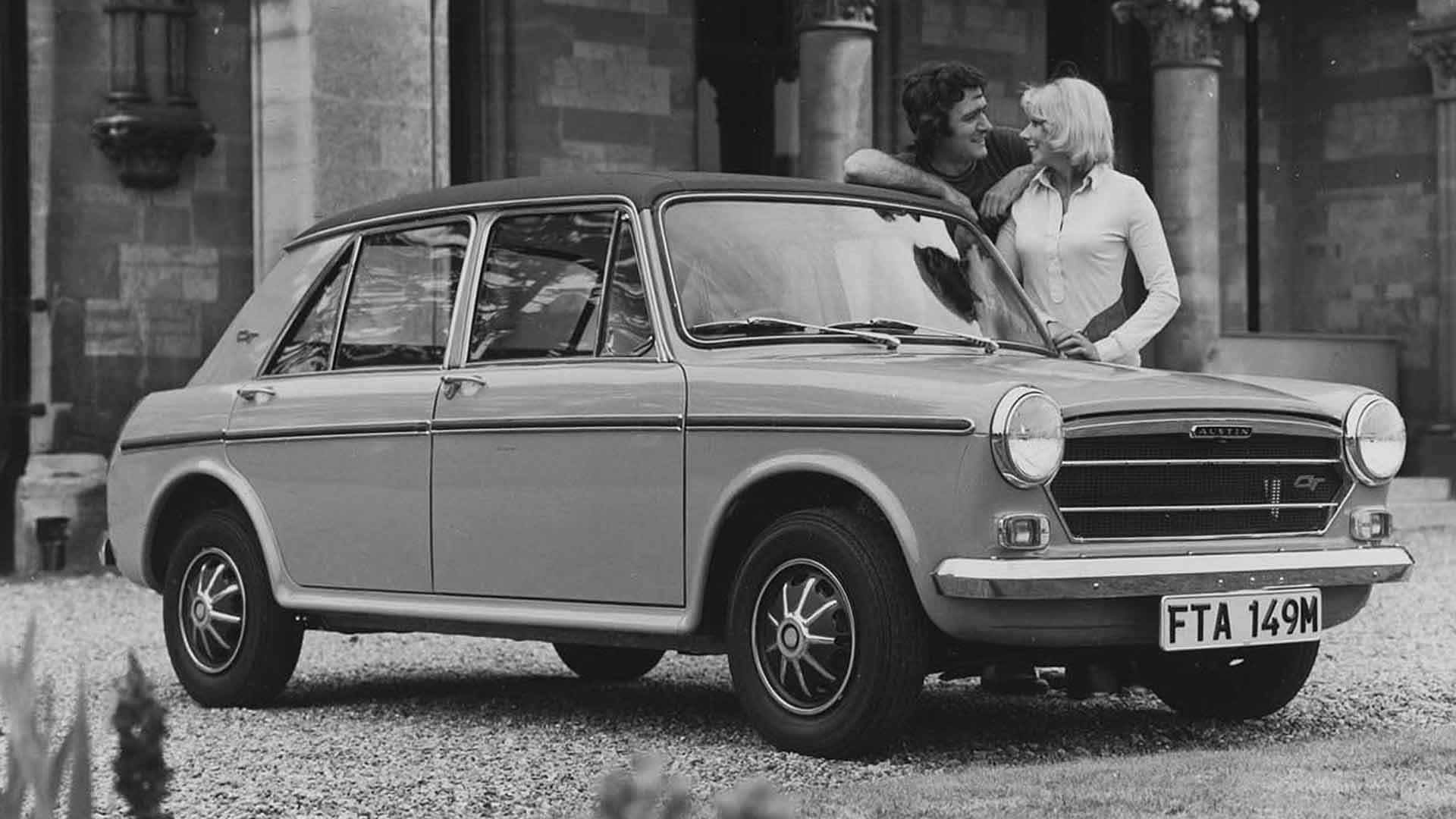
Austin 1300 GT
© BMHThe 1300 GT was a go-faster version of the humble Austin/Morris 1300, which, at the time, was Britain’s best-selling car. “It’s the first-ever GT with front-wheel drive, transverse engine [and] Hydrolastic suspension”, proclaimed Austin-Morris in 1969.
And it packed quite a punch: twin carburettors, alloy steering wheel, black ‘race-style’ upholstery, front disc brakes, big-bore silencer and lowered suspension were just part of its armoury. Top speed was a dizzying 96mph.
-
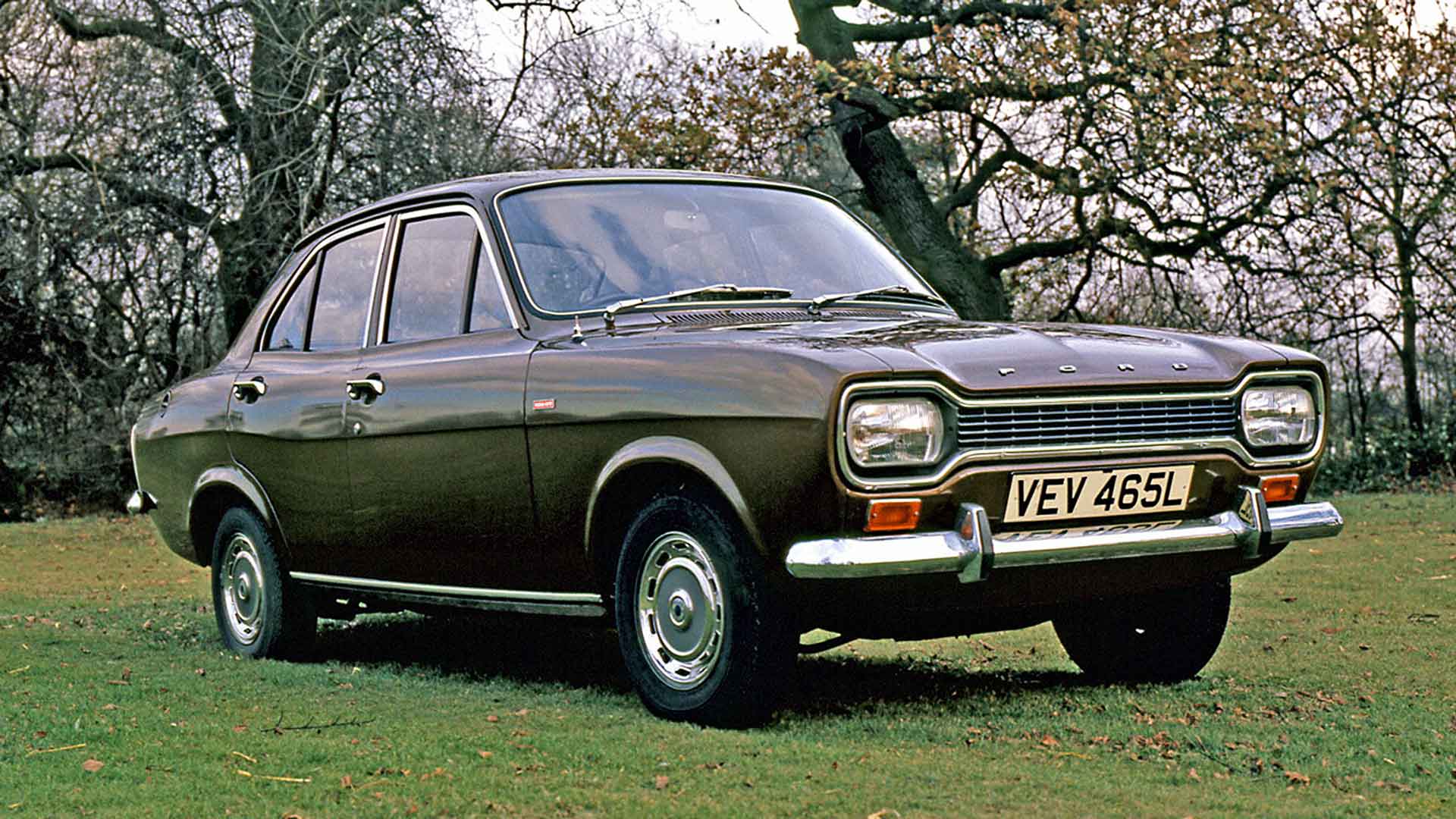
Ford Escort GT
© FordSearch for ‘Ford Escort GT’ online and you’ll find one of two variants. Allow The Truth About Cars to introduce the North American version: “The early-90s Escort GT was a decently fast car for its day, but Escorts were always such disposable cars that you seldom see any of these semi-goofy-looking GTs these days”.
More familiar to European motorists will be the Mk1 Escort 1300 GT, which used a highly-tuned version of Ford’s familiar 1.3-litre engine.
-
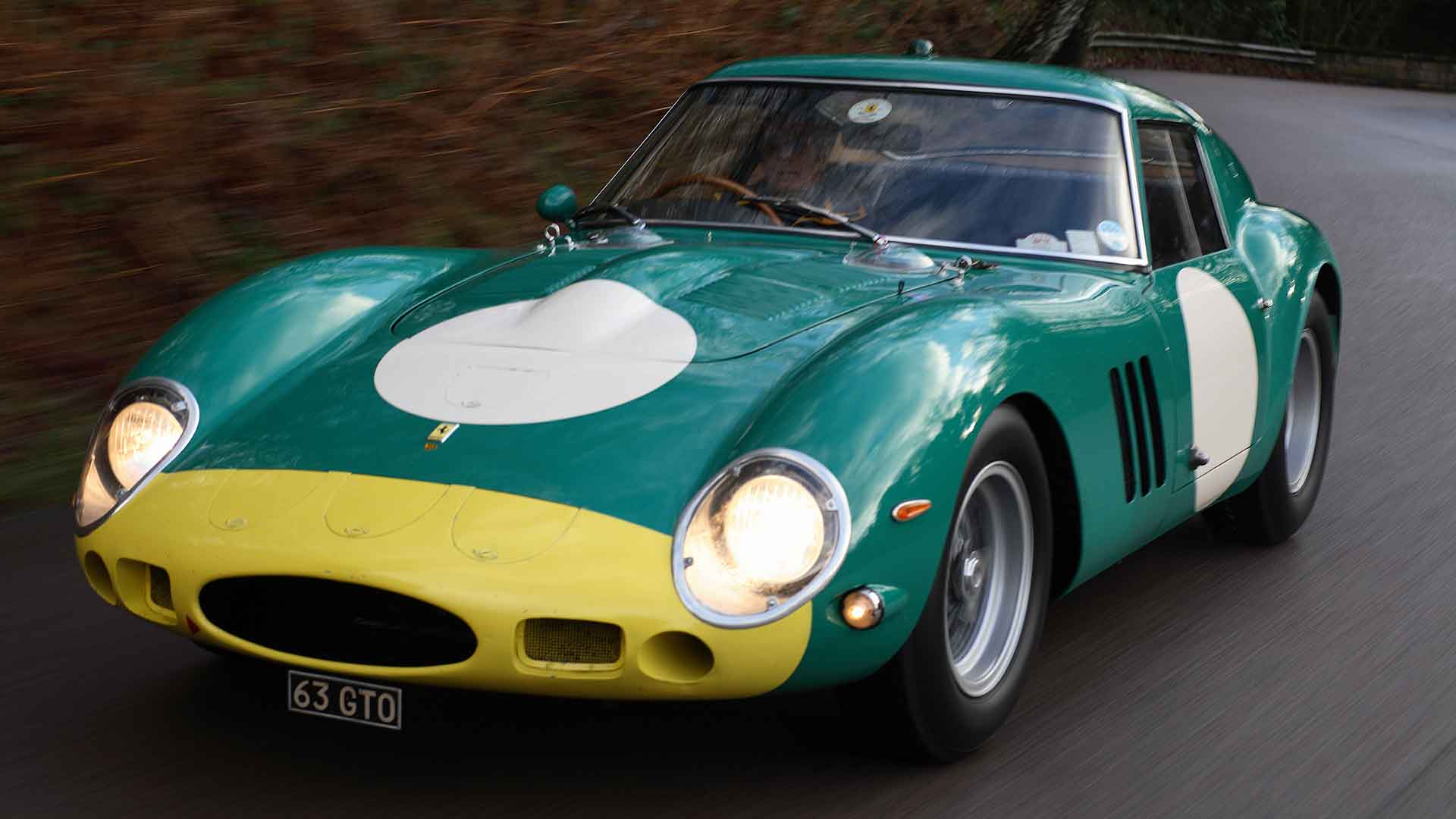
Ferrari 250 GT
© Salon PriveFerrari’s use of the GT badge dates back to the 250 Europa GT of 1954: the first in a series of 250 GTs of various bodies and finishes. These were the cars for the super-rich and the motoring elite, driven by film stars and genuine A-listers.
Pictured is a 1961 Ferrari 250 GT SWB California Spider, formerly the property of James Coburn and Chris Evans. Not one, but two 250 GT SWB California Spiders appear in the top 10 most expensive cars sold at auction.
-
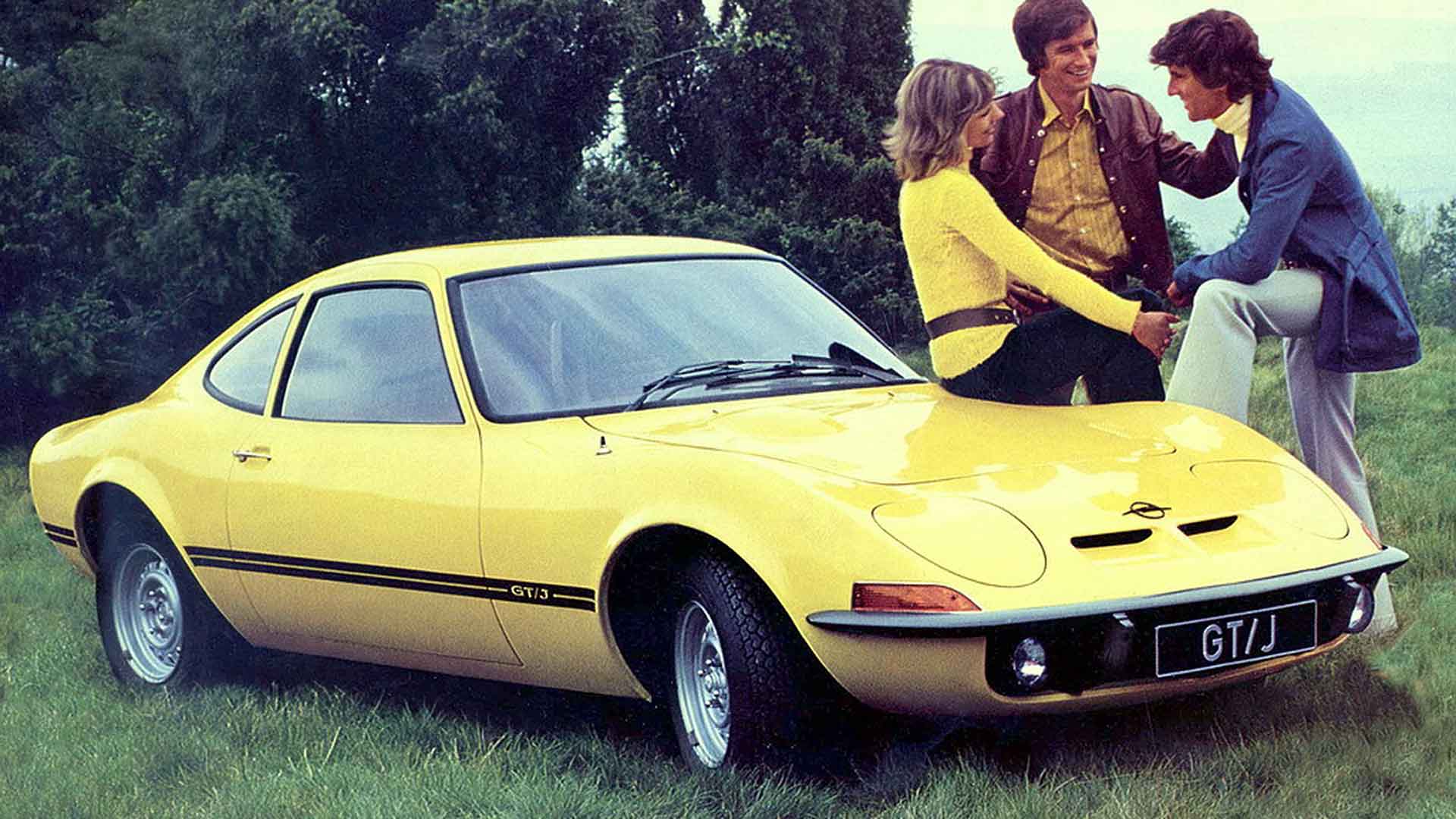
Opel GT
© Opel“Only flying is better,” proclaimed Opel when it launched the achingly beautiful GT. That it looked like a European Corvette was no accident, because the styling of contemporary Opel cars was heavily influenced by its American owners.
Underneath the GT you’d find the floorpan of a humble Kadett, while the fastback coupe body was built in France. The rotating headlights are superb, but although more than 100,000 GTs were built, none were right-hand drive. Shame.
-
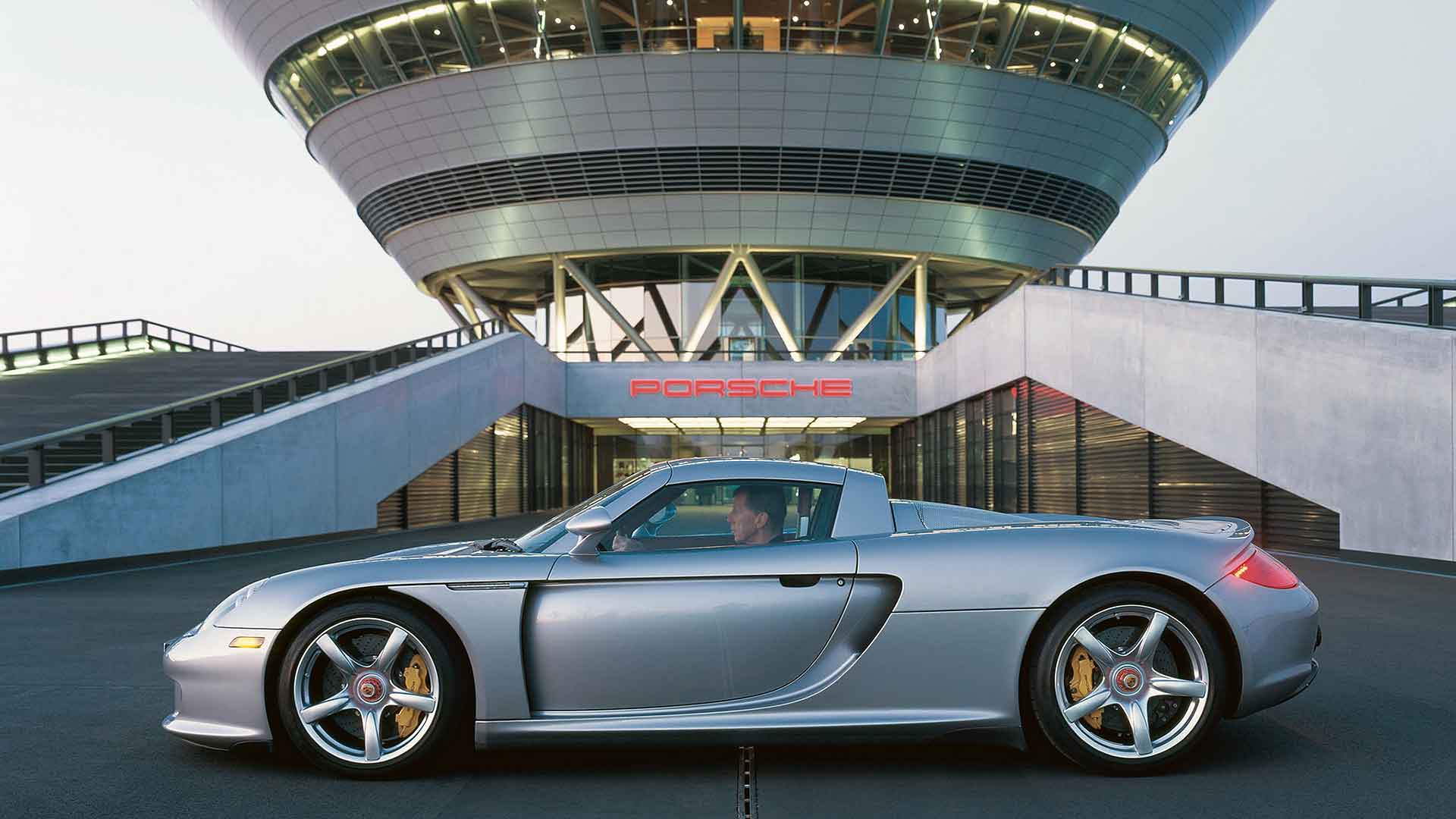
Porsche Carrera GT
© PorscheWhen production of the Carrera GT ceased in 2006, Porsche concluded – with a certain degree of bravado – that it was “ the most successful supercar in history”. Its point was that, at 1,270 units, more Carrera GTs rolled out of the Leipzig production facility than the McLaren F1, Ferrari Enzo and Pagani Zonda combined.
OK, so 605hp and a 0-62mph time of 3.9 seconds might not seem like a big deal in an age of the Dodge Demon, but it was the way in which the Carrera GT went about its business that made the difference. The race-honed V10 engine makes a noise rivalled only by Thor gargling on a single malt Scotch.
-
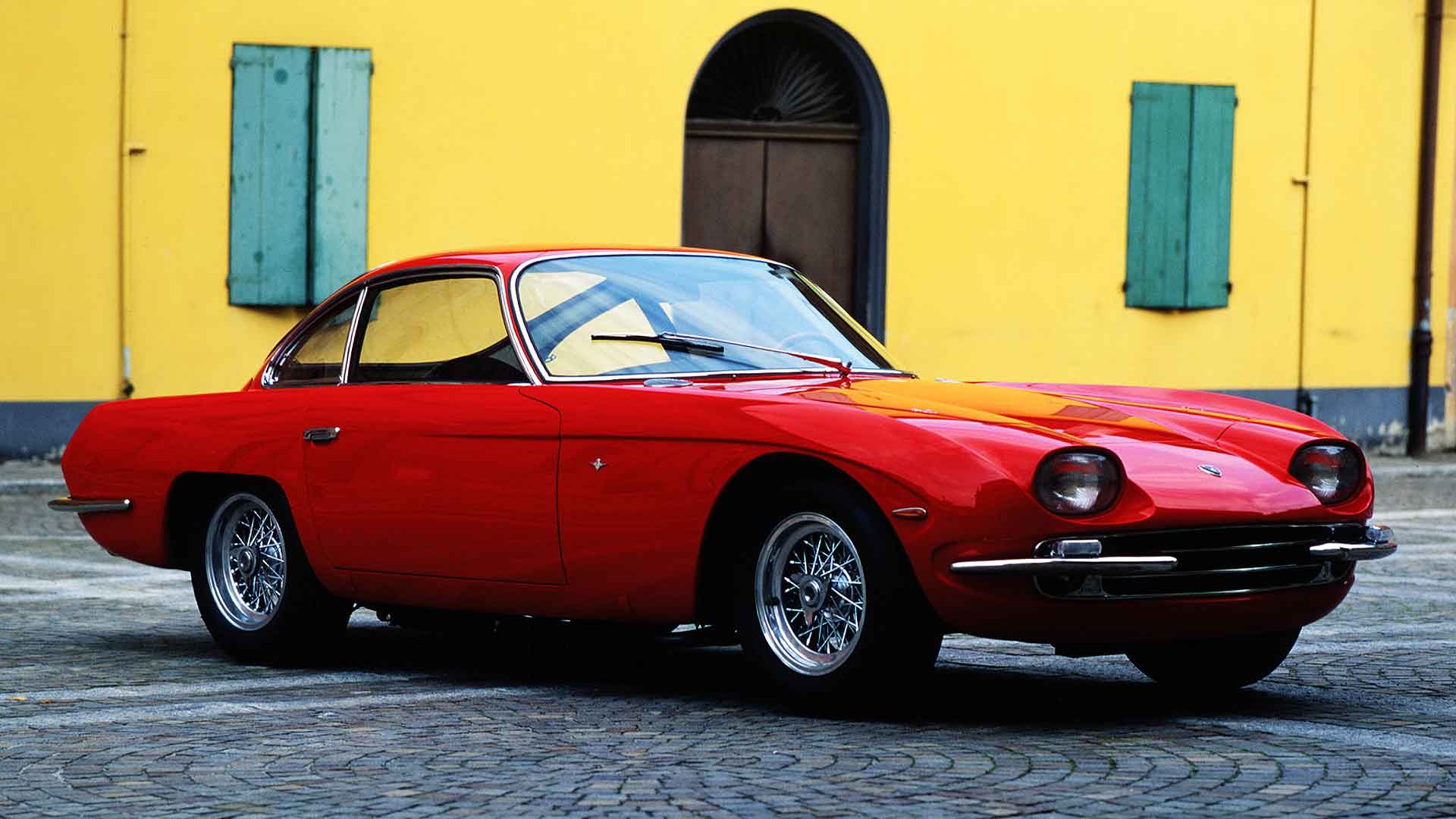
Lamborghini 350 GT
© LamborghiniFor Lamborghini, this was where it all began. The 350 GT was an evolution of the earlier 350 GTV and was the first Lamborghini to be mass-produced. If Ferruccio Lamborghini’s sole aim was to stick a metaphorical two fingers up at Ferrari, he well and truly succeeded.
Carrozzeria Touring built 120 units, the majority of which were powered by a 3.5-litre 12-cylinder engine. Two Spyder versions were also built by the famous Italian coachbuilder. A 400 GT followed in 1966 and was the first proper 2+2 four-seat Lamborghini.
-
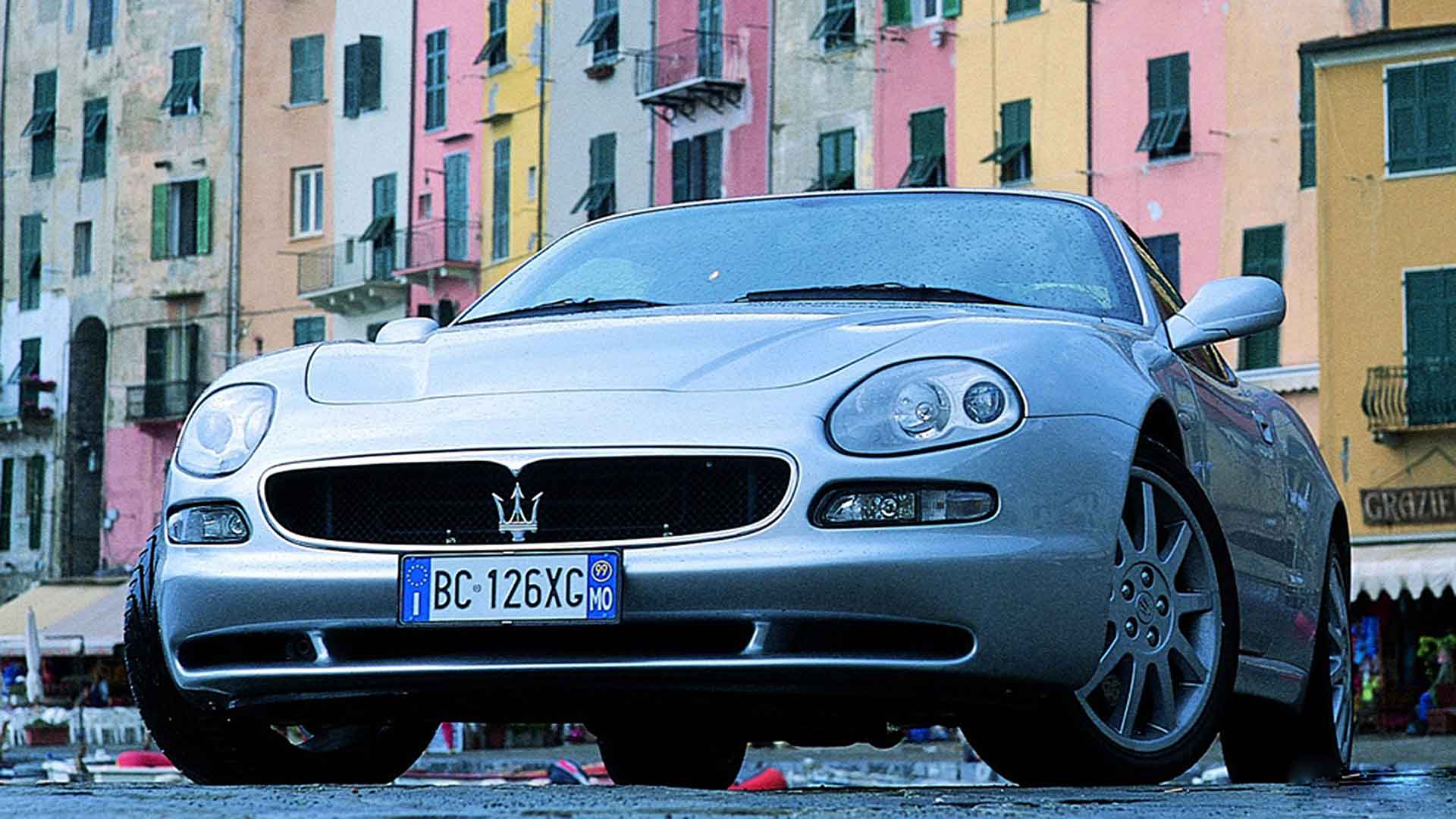
Maserati 3200 GT
© MaseratiThe 3500 GT of 1957 was Maserati’s first successful attempt at building a genuine grand tourer and was itself a replacement for the A6G/54 GT or A6 2000 Gran Turismo of 1954.
More familiar will be the 3200 GT, introduced in 1998. It used a 3.2-litre V8 engine to provide a top speed of 174mph and a 0-62mph time of 5.1 seconds. From a styling perspective, the ‘Boomerang’ rear lights were a standout feature.
-
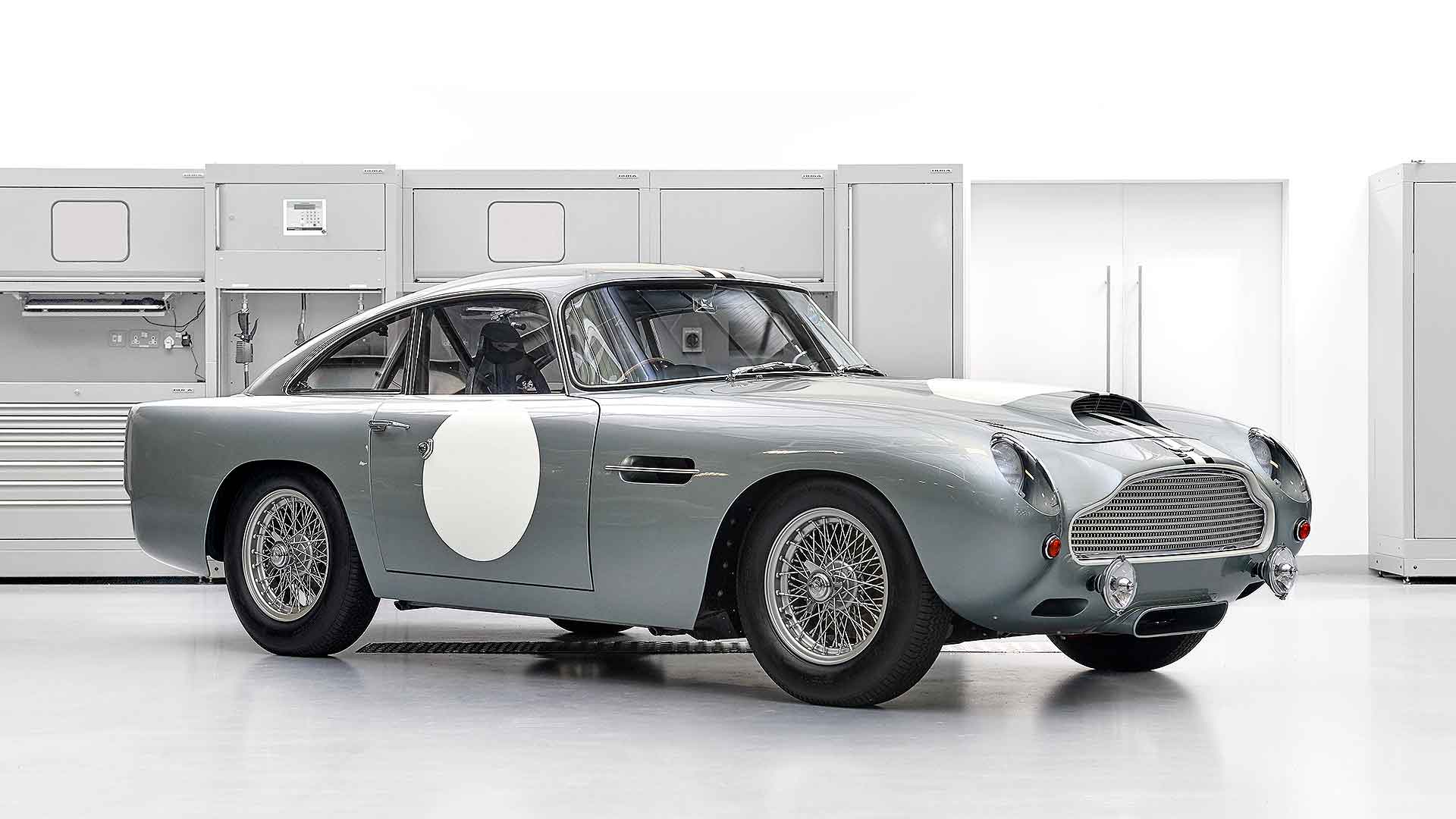
Aston Martin DB4 GT
© Aston MartinAt its launch in 1959, the Aston Martin DB4 GT was Britain’s fastest passenger sports cars, but this car was more than just a bold claim to drop into conversation at the gentlemen’s club. It was shorter, lighter and more powerful than the standard DB4 and was introduced in the same year Aston Martin won the Le Mans 24 Hours.
A total of 75 DB4 GTs were built between 1959 and 1963, including eight lightweight models.
-
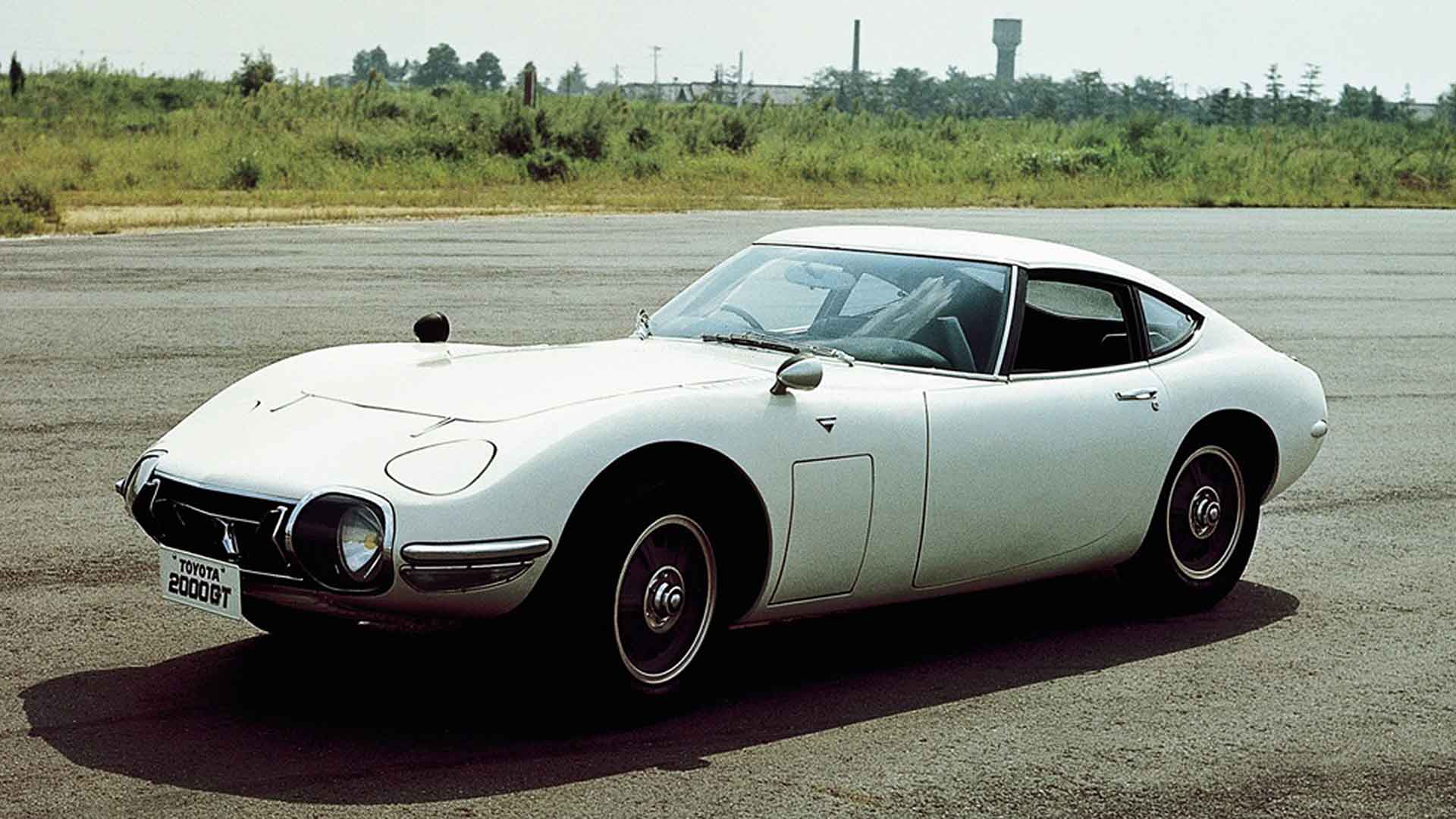
Toyota 2000GT
© ToyotaIs this the most beautiful car to emerge from Japan? You’d struggle to find anything better than the Toyota 2000GT, which was completed in prototype form by Yamaha in 1965. With Japan’s wealthy elite quick to open their wallets – shouting the equivalent of “take my money” – Toyota got involved with the next stage of development.
Yamaha was entrusted to tackle the production, with the first of these hand-built supercars arriving in 1967. Two open-top versions were created for use in the Bond movie, You Only Live Twice.
-
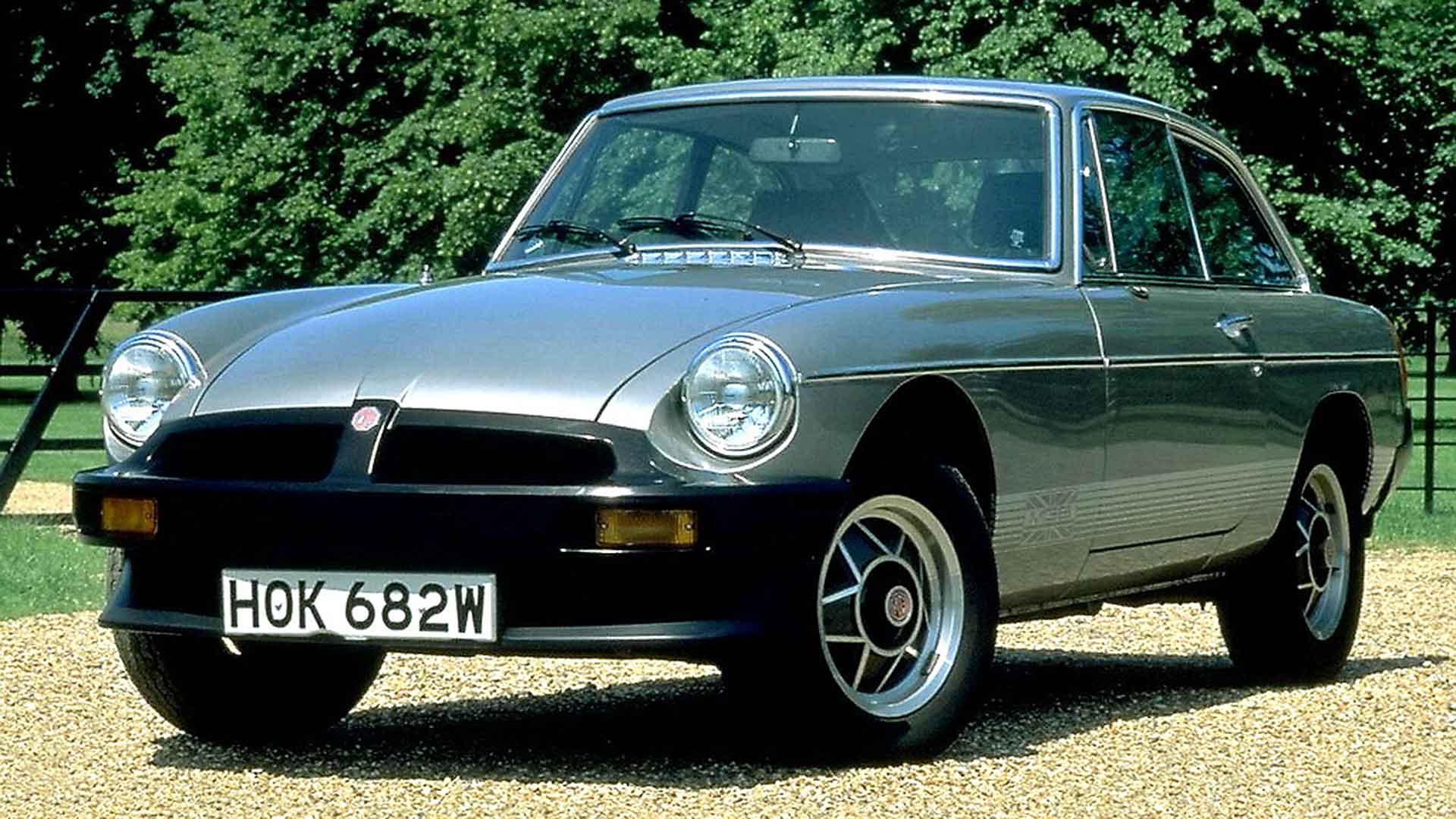
MGB GT
© British LeylandThe MGB was launched in 1962, but the Pininfarina-penned GT fastback wouldn’t arrive in 1965. It retained all of the handling characteristics of the roadster, with a raised windscreen height ensuring there was ample room in the cabin, at least in the front.
The MGB GT V8 arrived in 1973, right in the midst of the energy crisis. Timing is everything.
-
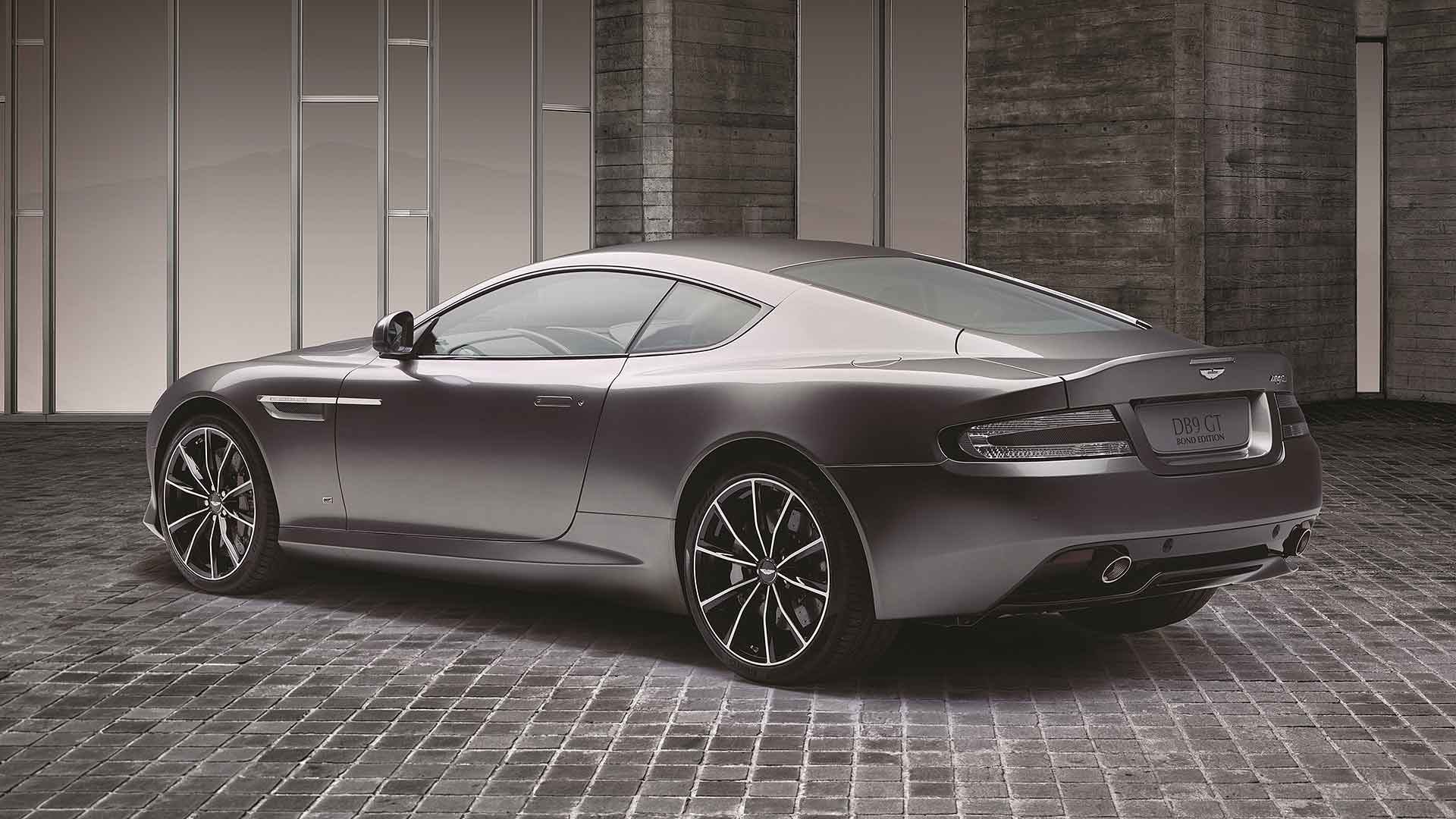
Aston Martin DB9 GT
© Aston Martin“The most elegant expression of a sports grand tourer, its DNA echoing the iconic DB GT models of its lineage,” is how Aston Martin introduces the DB9 GT. Power is sourced from a 6.0-litre V12 engine, which delivers 540hp.
The DB9 dates back to the 2003 Frankfurt Motor Show, with the GT seen as a swansong before it made way for the DB11. The DB9 GT Bond Edition was launched to mark the release of Spectre.
-
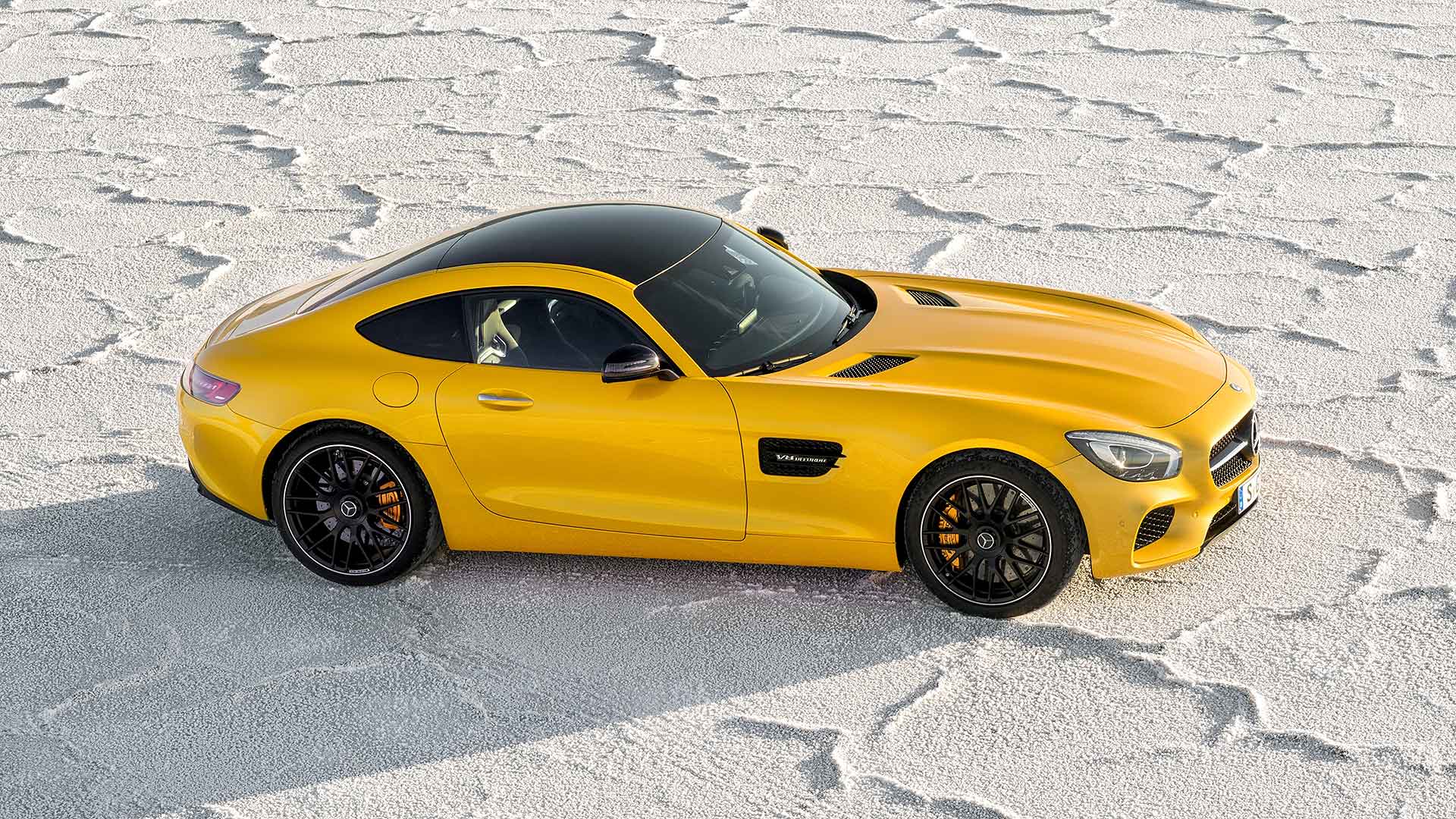
Mercedes-AMG GT
© Mercedes-AMGIn the case of the Ford GT, if you’re not one of the lucky few chosen to take delivery of the supercar, you’re out of luck. So while we were able to find a Porsche Carrera GT for sale on Auto Trader for £750,000 and a Mercedes-AMG GT for as little as £85,000, you won’t find a 2017 Ford GT… yet.
The Mercedes-AMG GT was unveiled in 2014 and was Affalterbach’s attempt to take a slice of the pie dominated by the Porsche 911. Today, the range has grown to include a Roadster and the hardcore GT-R.
-
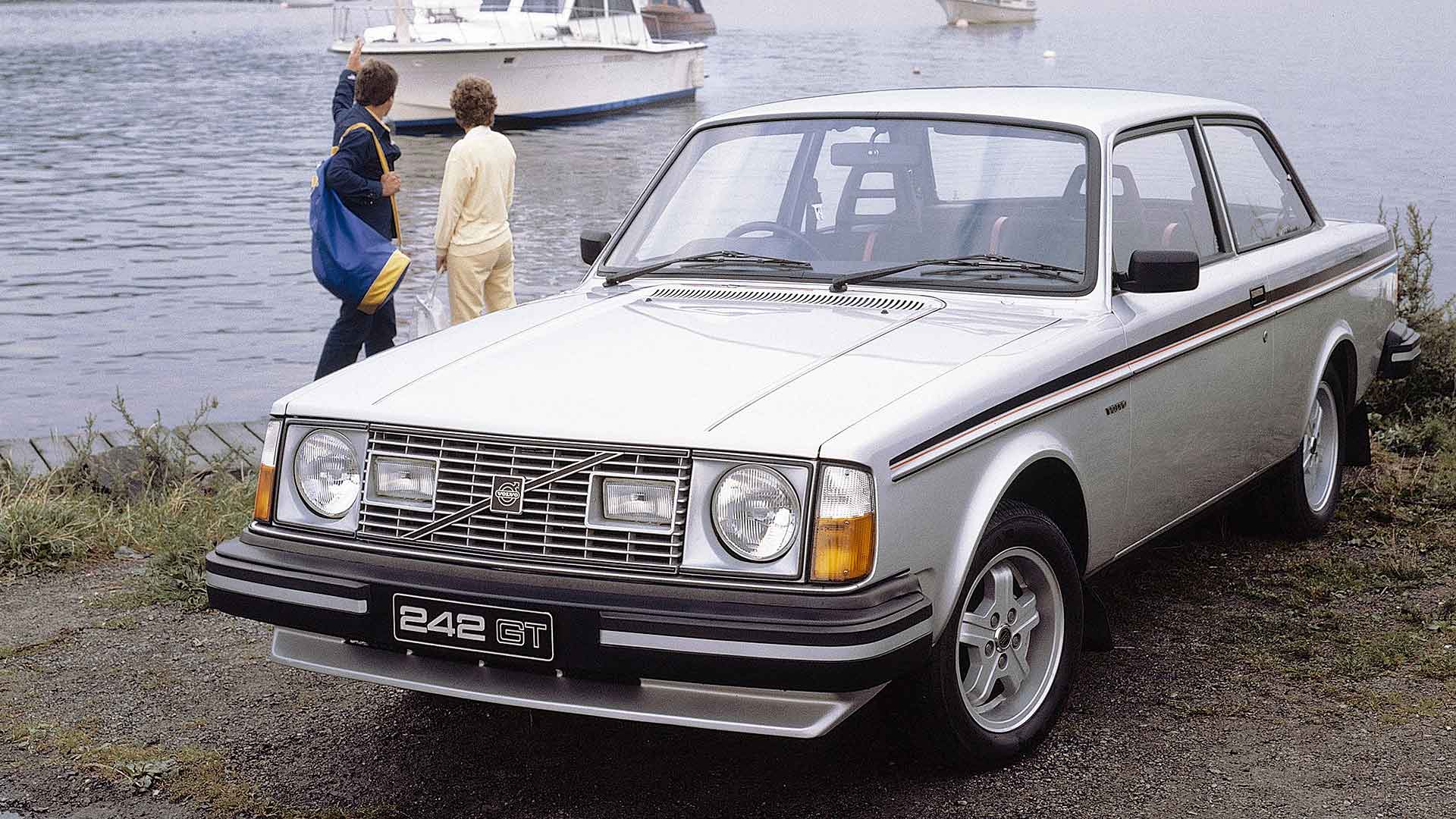
Volvo 242 GT
© Volvo“This very special Volvo includes a fuel-injected overhead cam engine, tuned suspension, alloy wheels, four-on-the-floor with overdrive and other features you associate with fine performance.” With a promise like that, how could anyone resist the 242 GT?
“If it had wings it’d fly”, proclaimed Volvo, in a headline that whiffed of a certain other Swedish carmaker. The 242 GT took Volvo down a new path, with a bespoke grille, round headlights, front spoiler and alloy wheels providing the clues to its sporting intent.
-
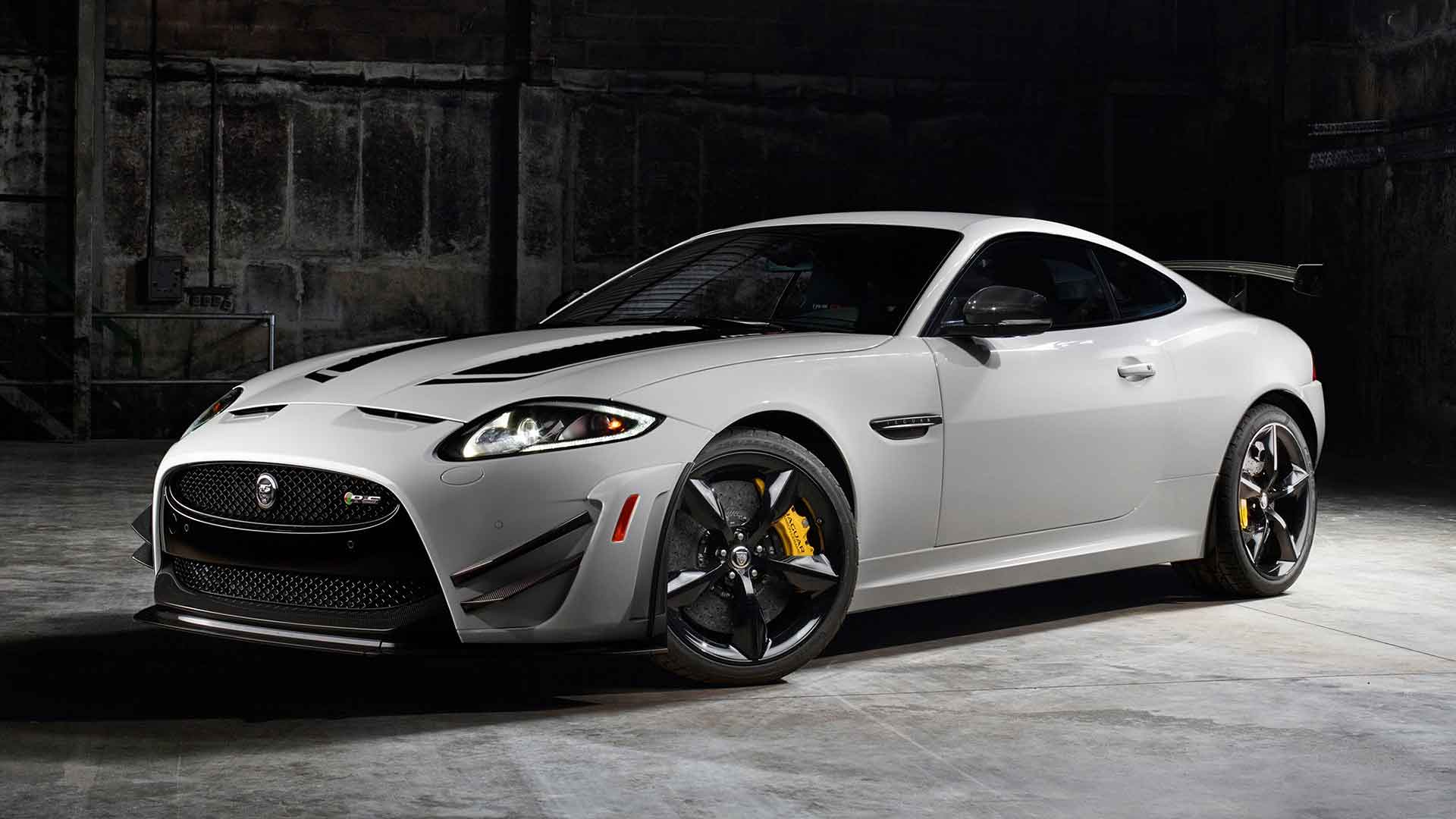
Jaguar XKR-S GT
© JLRHow do you shift an ageing product when you’ve just launched a shiny new model? That was the problem facing Jaguar when it launched the F-Type but had a few unsold XKR-S lying around the factory.
Which is why the £135,000-when-new Jaguar XKR-S GT exists. Only 10 of these 5.0-litre V8 supercharged run-out specials were built for the UK market, each one 145kg lighter than the standard XKR-S.
-
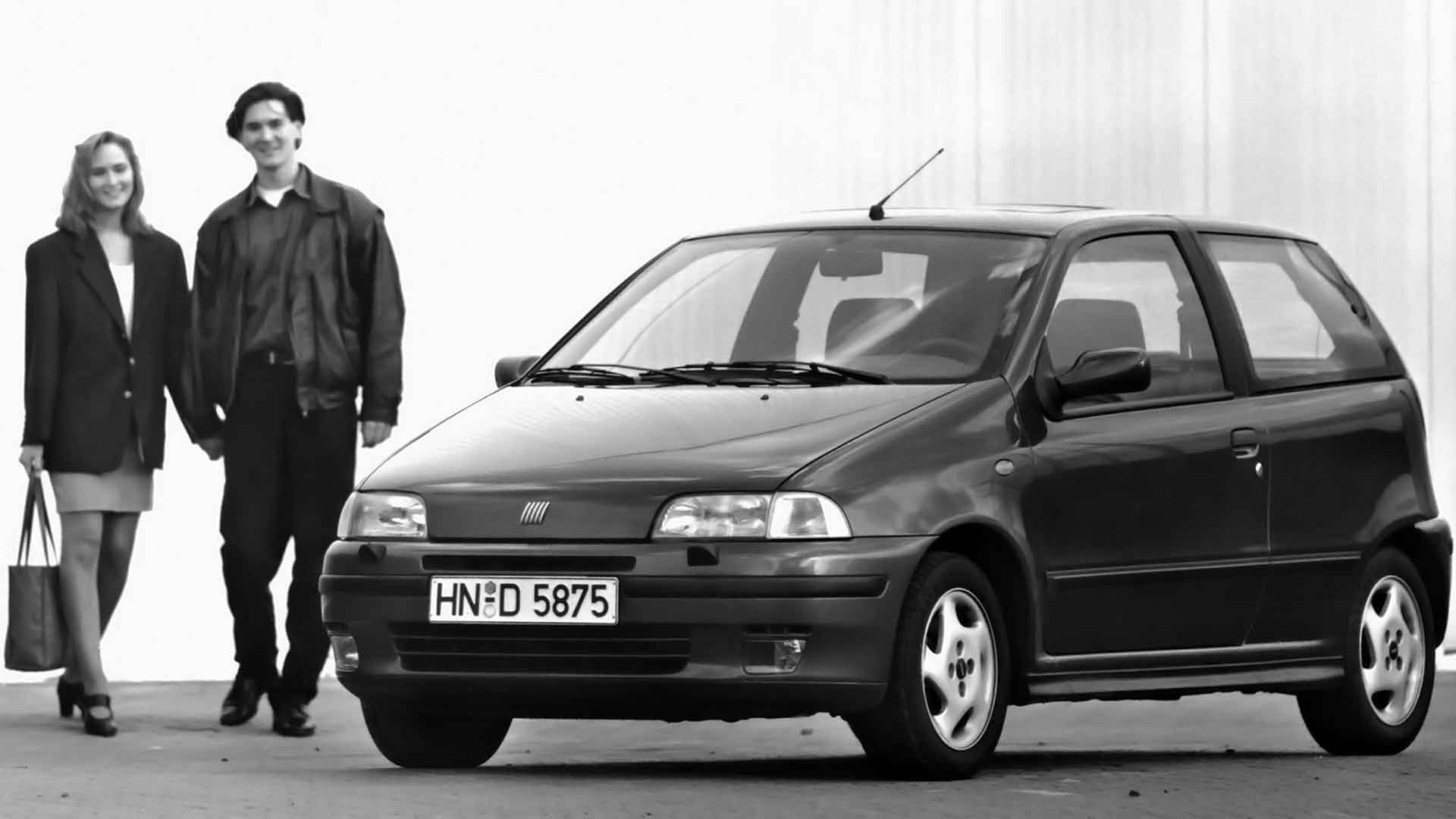
Fiat Punto GT
© FiatThe Fiat Punto GT may have lacked the handling prowess of many of its rivals, but it had an ace card up its sleeve. The 1.4-litre turbocharged unit was a development of the old Uno Turbo engine and ensured this feisty Fiat could punch well above its weight.
The 0-60mph time of 8.2 seconds was a revelation, certainly at this price point, which makes the lacklustre chassis all the more disappointing. Catch one if you can, because there are just 71 taxed and tested on Britain’s roads.
-
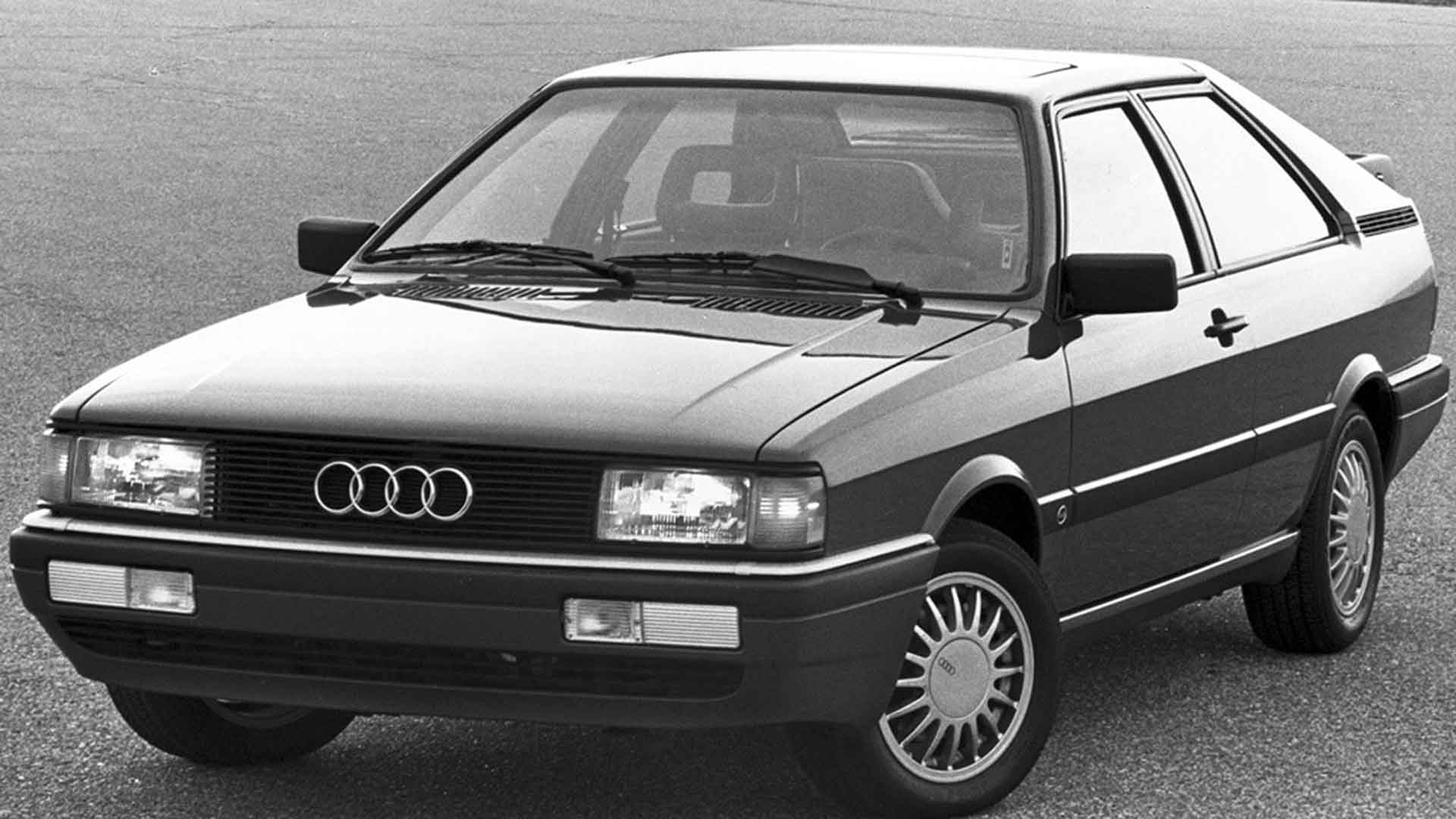
Audi Coupe GT
© AudiThe common or garden Audi Coupe arrived six months after the launch of the iconic Quattro and offered some of the styling for much less cash. OK, so the wide arches and ‘bahnstorming’ performance were absent, but the Coupe managed to cut a mean figure on the Audi forecourts of the land.
Select a Coupe GT with a five-cylinder engine and you could at least pretend to be Hannu Mikkola or Michele Mouton as you made your way home from the office.
-
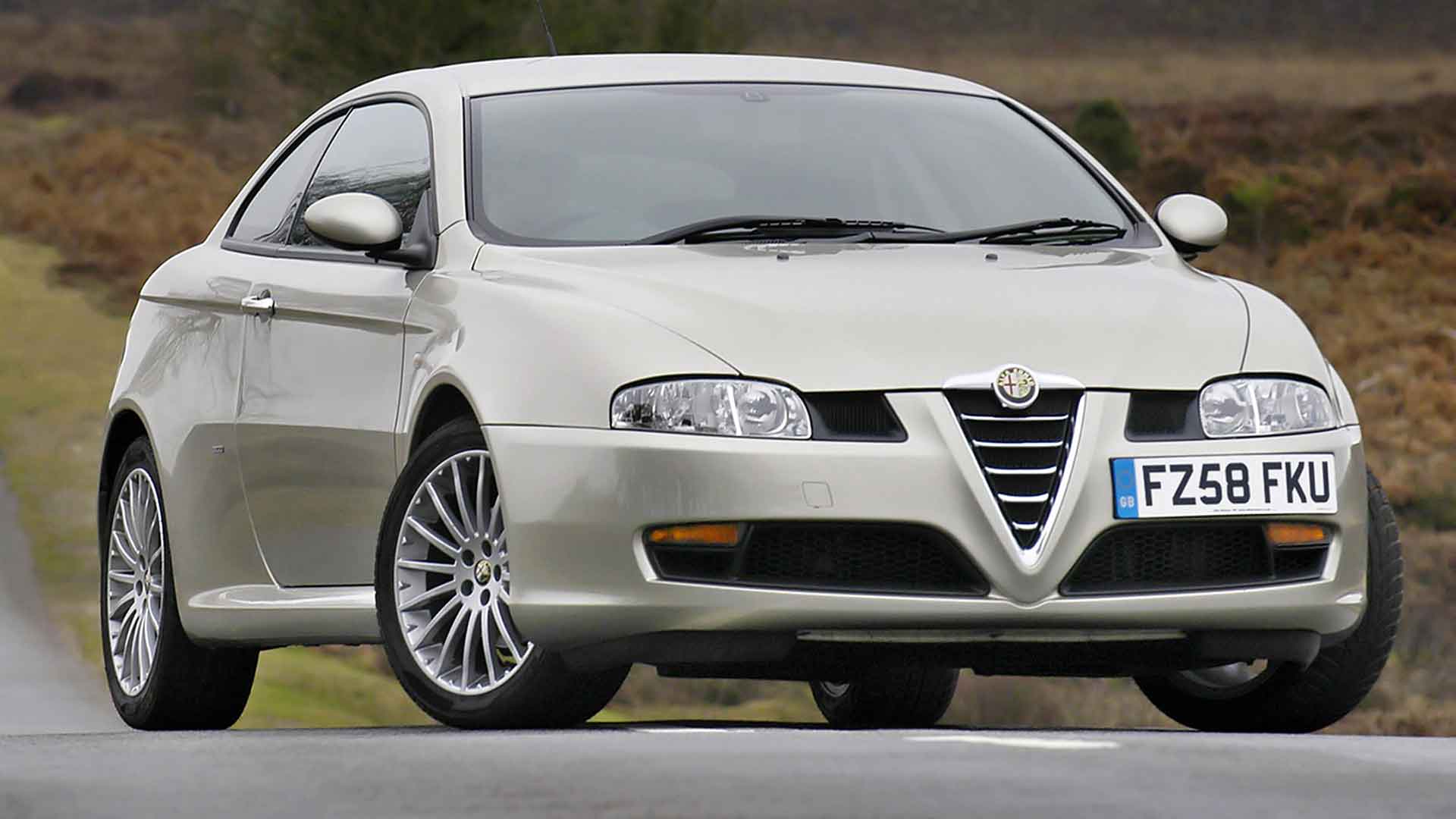
Alfa Romeo GT
© Alfa RomeoIt’s a modern Alfa Romeo, so you know you’ll have to make one or two sacrifices in order to live with the GT, but it’d be worth it just to stare at it on your driveway.
When powered by the 3.2-litre V6 engine, the Alfa GT is more than capable of living up to the promise of both badges. A proper Alfa and a proper GT.
-

Renault 5 GT Turbo
© RenaultThe Renault 5 GT Turbo was a true hot hatch hero of the 1980s, able to hold its own against the might of the 205 GTi and Golf GTi. Key to its brilliance – aside from the turbocharged engine – was its lightness, with the GT Turbo tipping the scales at just 850kg.
Today, Renault uses the GT badge to denote its flagship models, as demonstrated by the Megane and Twingo. In truth, they can’t hold a candle to the French GTs of yesteryear.
25 surprising cars called GT
We name 25 great cars to wear the GT badge with pride
Home 25 surprising cars called GT
News
Ultra-rare MG XPower SV-R supercar is up for sale
One of only 42 examples built, this V8-engined MG XPower SV-R is a true piece of British motoring history – and you could own it.
Race and rally Ford icons head to auction this month
The Iconic Auctioneers NEC Classic sale features an array of legendary Ford performance cars, including a Sierra RS500 and a road-spec RS200.
Classic Jaguar bought by Madonna heads to auction
Pop icon Madonna has been photographed at the wheel of this Jaguar Mark X, which she purchased for her son, Rocco, to use in London.
Features
The amazing 10-car garage you could buy for the cost of ONE wedding
As Prince Harry and Meghan Markle announce their engagement, we fire up Auto Trader
A brief history of Mercedes-Benz sports cars
As the R107 SL celebrates its 50th anniversary, we look at the glamorous history of Mercedes-Benz sports cars.
What if… Jaguar had built an XJ40 coupe?
It was 1993 before a prototype Jaguar XJ40 coupe arrived – and by that time, the new X300 model was imminent. We look at what could have been.
Reviews
MR archive: Jaguar XJ6 X350 review
The year is 2003 and Jaguar has just launched a groundbreaking aluminium XJ...
2001 Porsche 996 Turbo review: Retro Road Test
The 996 Turbo combines serious performance with modern manners. It's also one of the best value used Porsche 911s you can buy.
Suzuki Jimny: the retro off roader you can still buy today
Yes, you can walk into your nearest Suzuki dealer and drive away in a brand new Jimny
